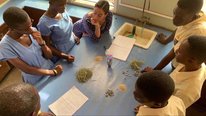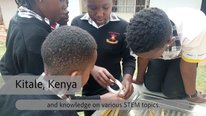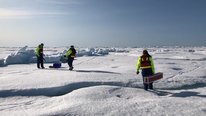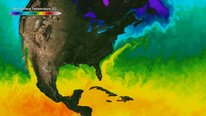- Hiller Spires
- Supporting Students' Science Content Knowledge Through Project-Based Inquiry (PBI) Global
- https://www.fi.ncsu.edu/projects/nsf-drk-12-supporting-students-science-content-knowledge-through-project-based-inquiry-pbi-global/
- North Carolina State University, The Friday Institute for Educational Innovation
- Erin Krupa
- Assistant Professor
- Supporting Students' Science Content Knowledge Through Project-Based Inquiry (PBI) Global
- https://www.fi.ncsu.edu/projects/nsf-drk-12-supporting-students-science-content-knowledge-through-project-based-inquiry-pbi-global/
- North Carolina State University
Public Discussion
Continue the discussion of this presentation on the Multiplex. Go to Multiplex








Hiller Spires
Dear Visitors,
Thank you for viewing our short video on Supporting Students’ Science Content Knowledge through Project-Based Inquiry (PBI) Global!
This video features the culminating showcase for 120 9th grade students from two Cooperative Innovative High Schools in North Carolina -- one rural and one urban -- who engaged in cross-school, collaborative inquiry on the issue of global water and sanitation challenges.
PBI Global is a five-phase inquiry process that engages students and educators in asking a Compelling Question; gathering and analyzing sources; creatively synthesizing claims and evidence; critically evaluating and revising; and sharing, publishing, and acting.
The students featured in this video worked in small groups, composed of members from each school, for four weeks in order to devise and respond to Compelling Questions that necessitated the creation of multimodal inquiry products and sustainable, replicable, and scalable water filters.
At the showcase, students shared their products with fellow classmates, parents, teachers, and community members, presenting their findings in a tradeshow and proposing a solution to a global water issue in an advocacy pitch. After the showcase, the students participated in a Walk for Water, where they walked two miles carrying two gallons of water to replicate what many of the 2.1 billion people who lack access to safe drinking water at home endure every day.
In the discussion for this video, we encourage you to share your thoughts on this project and ask any questions you may have! We’d especially enjoy to hear about your experiences supporting interdisciplinary STEM through inquiry, as well as “inquiry to action” project models.
Thanks for watching!
Matt LaDue
Kristin Flaming
Hiller Spires
Gwen Stovall
Joni Falk
This is an awesome project and a great video. I love that the students engage in authentic problems and become invested in the science through a sense of social justice. You not only integrate collaboration, authentic inquiry, but also build student empathy for those who have less than they do. Two questions: How will you measure impact? And how will you adjust the showcase if you can't get the students together face-to-face due to Covid 19?
Martin Storksdieck
Hiller Spires
Hi Joni,
Thank you for viewing our video. We 're using quantitative and qualitative measures to assess science content and engagement, respectively. We are discussing now how to move forward for year two. We assume we will be doing the work remotely but are not sure. We'll let you know when we figure it out!
Hiller Spires
Hi again Joni,
I've added more detail regarding our research questions and instruments in response to Nahid's question below. Additionally, with regard to students potentially not being able to showcase face-to-face next year, we've facilitated past PBI Global iterations in which students worked collaboratively across schools and never met face-to-face; this necessitates an even greater emphasis on community building practices as the project begins and throughout its duration.
Logistically for the showcase, we will be co-planning this summer with the teachers on how best to handle the possible project and showcase formats. We've conducted synchronous, remote showcases previously using video conferencing tools, and we've also created an online portal (much like what we're using for this showcase) where student teams can share their work asynchronously. The format options for the showcase will also impact the expectations for students' multimodal products. When considering project design and showcase format for next year, student and teacher equity and access will guide our decision-making processes.
Melanie Cooper
Great project, and interesting video! I'd be really interested to see how this has impacted students ideas about the importance and relevance of science and scientific inquiry. Do you have plans to follow up with these students at a later time?
Matt LaDue
Erin Krupa
Assistant Professor
Melanie,
Thank you for the positive feedback on our project and video. We followed-up with the students already and are now organizing and analyzing the data. We have survey data from them about scientific inquiry and also did focus groups to hear more about these ideas, so we could capture students' voice.
Matt LaDue
Michael I. Swart
Dawn Cummings
a really smart to have a project that combines a local issue and global issue. I especially like how the project not only teaches science but also builds on empathy.
Do you have your lesson plans/activities posted anywhere or a way to share them with other faculty?
Erin Krupa
Assistant Professor
Dawn,
Thank you for your feedback. Yes, we believe it is important to have students learn about global issues through local contexts and to use local contexts to understand more global issues. We are actually in the peer-review process for disseminating our lesson plans and activities and will gladly share them once it hits publication, part of that process has been building a website to house all the materials. Once that is complete and polished, we will gladly share that with teachers and other faculty.
Preeti Gupta
Hiller Spires
Hi Dawn,
We're hoping to continue to build out instructional materials on our site -- https://www.pbi-global.com/. We expect to have cross-disciplinary lessons and supports (9-12 grade band) for PBI Globals focusing on UN Sustainable Development Goals 3 (Good Health and Well-Being) and 13 (Climate Action) on our website by the end of summer 2020.
Deborah Herrington
Hiller, this seems like a great project. I especially love how you are able to help students see the problem by having them carry 2 gallons of water over a long distance! I would love to know how this is changing students perceptions of what science/engineering is, what scientists/engineers do, and whether the see themselves as future scientists/engineers. Are you collecting any of these data?
Matt LaDue
Michael I. Swart
Hiller Spires
Hi Deborah,
Thank you for viewing our video! Although your questions are not the focus of our data collection and analysis, students have been addressing these ideas during our focus groups, particularly with regard to how their evolving perspectives of what scientists/engineers do has impacted their motivation/engagement in STEM coursework.
As part of the PBI Global initiative, we've also made an intentional effort to bring Global Water, Sanitation, and Hygiene experts to the classrooms (virtually and in-person); these experts have represented community and governmental organizations and higher education institutions. One of these experts, Dr. de los Reyes, is featured in our video. Anecdotally, we've observed that by connecting students with scientists, engineers, non-profit leaders, civil servants, and policymakers, the students gain a deeper and more nuanced understanding of the collective efforts needed to address these enduring global challenges, and in turn, see how they could pursue careers to take part in these efforts.
Nahid Nariman
Hi PBI Global Team,
Amazing video and very interesting on unique real-world problem that is related to the students' lives. I am interested in learning what instruments you have used in measuring students' growth in 21st century skills. Have you created your own instrument or are you using one from previous research? Do you care to share, please?
Hiller Spires
Hi Nahid,
Thank you for your interest in our project! For this particular study, we are investigating (1) how PBI Global supports students' science content knowledge, motivation, and engagement and (2) how PBI Global professional development influences teachers' attitudes toward engaging in inquiry with their students.
The instruments we're using to measure these items are (1) pre-, during, and post-focus groups with students and teachers; (2) pre- and post-science content assessments with students utilizing questions from the National Assessment of Educational Progress (NAEP) Question Tool and the American Association for the Advancement of Science (AAAS) 2061 Science Assessment Item Bank; (3) pre- and post-MUSIC Inventory to examine motivation with students; (4) pre- and post-Inquiry: Science Teachers Survey with teachers; (5) and an assessment of students' multimodal products utilizing a PBI Global rubric. The researchers also conducted fidelity checks through classroom observations during PBI Global implementation.
We have not yet measured students' growth in 21st century skills as part of PBI Global, rather we've examined students' cosmopolitan literacies development throughout the PBI Global process. We would certainly be interested in examining this aspect of participation in PBI Global and would welcome any suggestions that you have for instruments!
Jill Rhoden
What an interesting project! As others have commented, tying the carrying water activity into the project really rounds out the experience. Are all student groups asking different questions under a united theme? How do they obtain materials to build their projects?
Matt LaDue
Hiller Spires
Hi Jill,
Yes, carrying the water proved to be an important part of the project by helping students acquire empathy. Student teams came up with different compelling questions from the theme of Global Water and Sanitation. Our NSF grant provided some funds for materials and schools provided the rest.
Jeffrey Ram
The water carrying was also the most eye-catching image in your video! Sort of the game of Survivor in real life. I hope your students also thought about the wastewater end of the cycle, too. Here in Detroit we have plenty of water but not every one can afford it. If it is a right (well, of course, it is), then how do we share the cost? Aside from the distribution inequities, one of our primary worries is how do we keep it as clean as possible in the environment, so that it is safe not only for humans but also for animals and plants. What personal experience demonstration do you have, comparable to the water-carrying activity, that can bring these other water issues to their consciousness and concern.
Matt LaDue
Hiller Spires
Hi Jeffrey,
Absolutely! Since UN Sustainable Development Goal 6 focuses on access to clean water and adequate sanitation, students' self-developed Compelling Questions could investigate the myriad facets of Global WaSH challenges. Additionally, Dr. Francis de los Reyes, a professor of civil and environmental engineering at NC State, met with students to discuss his work on designing innovative, scalable, and sustainable sanitation solutions in Lower- and Middle-Income Countries. Dr. de los Reyes also created an engaging TED Talk on these issues. This particular PBI Global lasted four weeks; however, we have designed and engaged teachers and students in a different and more abridged iteration of an SDG 6-focused inquiry that culminates with participants conducting a "Big Squat." We would welcome your suggestions and ideas on additional social action pieces that bring other water issues to the fore.
Greg Banks
Inspiring and exciting project...you can see the interest and engagement on the faces of the students--congratulations! I'm curious about the intention behind the cross-school collaboration and what part that played in student teams' final projects. At what stage(s) in the project was this brought in? How was it used to push students' thinking?
Hiller Spires
Hi Greg,
We were curious about having students from two different schools collaborate across time, space, and culture. The students were in teams with 3 students from the rural school and 3 from the urban school. They worked collaboratively to answer their compelling questions. The students decided near the beginning of the project what role they would play on their team for the showcase. At the showcase, students shared their products with fellow classmates, parents, teachers, and community members, presenting their findings in a tradeshow and proposing a solution to a global water issue in an advocacy pitch. Having students collaborate from rural and urban cultures afforded the student's learning about similarities as well as differences within their communities, as they were all learning new information about developing countries.
Preeti Gupta
Director of Youth Learning and Research
Thank you presenters and commenters are great dialogue. Please keep it going! I have a few questions. How many students are you working with and how do you create the cross-school teams? In terms of the school teachers, are they doing this work during school hours and if so, how are they carving the time for that?
Hiller Spires
Hi Preeti,
We had 120 students participate from two schools--a rural and urban school. The teachers from the two schools placed the students in groups with about 3 students from each school on one team. Yes, most of the project was conducted during school hours. It was challenging but since this was a whole 9th grade projects, the teachers created a schedule that combined synchronous and a-synchronous work sessions. The principals at both schools were supportive so the teachers had flexibility with scheduling.
Preeti Gupta
Director of Youth Learning and Research
This is a question for all of the commenters. Do you think a project like this could work in your own cities? What resources besides money would you need? What challenges might you face?
Matt LaDue
I think this kind of project could definitely work in Austin, TX. Many people use public water spaces and protecting these areas is a common area of scientific inquiry. I'm not sure how much money it would cost to run such a project over four weeks. The biggest challenge in my mind is being able to find time to fit it into the curriculum. For elective classes it would probably be easier, but trying to have teachers in traditional biology or chemistry classes do this with their students could be harder.
Also, when doing many small group projects like this over a four week timespan, another challenge would be giving the instructor enough support to carry it out effectively. They would need more adults in the classroom facilitating this.
Martin Storksdieck
Director
I really like the project and liked the video: compelling narrative, with great footage. This looks to me like a great example of adding authentic and creative learning experience around an STS problem. Let Troy Sadler know about it (he probably already does). What I find fascinating is the potential for this not being based on entirely self-selecting in: I was wondering (and you may have already discussed this above): assuming the kids who are in the science or STEM choir can't get much deeper into it, were you able to engage and excite kids who were skeptical or disinterested or scared of science to engage and change their minds?
Hiller Spires
Martin,
I think we will able to capture that from our data.
Nickolay Hristov
Ph.D.
Beyond innovative STEM-learning, this project gives insight into tackling thorny topics like climate change or conservation that are often strained along the urban/rural continuum. Rather than being lectured or persuaded about it, students get to walk into these conversations and self-learning experiences on their own. Brilliant! You have much on your hands with this model already but I wonder if you’ll find differences in the many STEM-learning related measures that you already have in place between the participants from these two cohorts.
And I wanted to call out the crafty use of the video medium in your presentation! Well done! Who filmed and produced the video with you? Many project teams here are on the lookout for good examples and eager to improve their video-making and visual narrative skills. These short notes about the work behind the scenes help the viewers and give much deserved credit to an important part of the project and its story.
Matt LaDue
Hiller Spires
Nickolay,
We are in the middle of analyzing our data now. I have bee working with the same videographer for the past 7 years now. I realized if I captured video of my projects in action they are much more informative than footage only at the end of a project.I find it great to have these videos as companions to my research articles--brings the work to life.
Matt LaDue
Joni Falk
Hiller, I thought you would be interested in viewing the presentation: The USF-Ghana Water and Sanitation Collaboration: as it touches on some related themes. So enjoyed your presentation.
Hiller Spires
Yes, I saw it. It's fantastic!
Kebreab Ghebremichael
What an interesting project! I like the fact that you made the students carry 2 Gal water and experience the walk for water.
As this is very related to issues of water supply in developing countries, I as wondering if you had international collaborators.
Hiller Spires
Kebreab,
We did not have international partners with this particular PBI Global, but have partnered with educators in China in the past.
Braska Williams Jr
Wow! Very interesting project. Could we possibly implement this project in our summer camp or Saturday Academy?
Hiller Spires
Hi Braska,
Let's discuss and see what we can work out!
Abolhassan Mohammadi Fathabad
Such an inspiring project. It is great to feel the difficulties of the undeveloped regions with compassion. At the University of Arizona, we have a program called indige-FEWSS in which we try to address water and energy hardships in Navajo Nation. Please check out our video.
Heidi Carlone
Hiller Spires
Will do! Thank you, Abolhassan.
Brett Jones
I love how you had the kids carry the water to gain empathy!
Hiller Spires
Thanks Brett! It's been amazing to hear from the students how the Walk for Water reinforces and expands the understandings gained through their inquiry, particularly with regard to empathy-building.
Heidi Carlone
Great video and project, Hiller and Erin! It's so interesting the ways environmental problems become such rich contexts for integrating the content areas, which we just do not see enough of, especially at the high school level. Further, issues that directly affect youth or that cultivate and leverage empathy, like access to clean water, are so engaging to youth. They really dig in when they're invested. The solar powered sand filtration system was a great example of this! (By the way, I'd love to see a template for how the youth created that model-- WOW!)
I assume that you all know about the wine to water folks in NC? They come to classrooms and introduce youth to the water filtration systems that they're using in parts of the world that have limited access to clean water.
My favorite part of this video is how youth are positioned as epistemic agents-- as knowers, inventors, creators. This is what we want for education-- now, more than ever!
Hiller Spires
Hi Heidi,
Thanks for checking out our video! I just checked out Wine to Water's website. Thank you so much for sharing this organization with us -- a great potential connection for future projects! I'd be happy to share the Person Early College engineering teacher's email with you if you'd like to reach out regarding the solar powered filtration system.
Dave Miller
Great project and thanks for sharing! Impressive authentic collaborative engagements, and in particular I'm intrigued with the potential of the collaborations as a spark toward students' gathering and evaluating multiple peer perspectives and the value this brings to their thinking.
Hiller Spires
Hi Dave,
Absolutely! One of the components of the PBI Global process is "critically evaluate and revise." As part of this phase, students engage in peer feedback sessions. Additionally, when students collaborate across schools, the intra-team dynamics are such that learners are sharing and reflecting on multiple peer perspectives. The showcase also encourages students to view each other's projects and ask questions. In terms of value, we've observed that listening to and internalizing peer perspectives influences the focus of student teams' Compelling Questions; how they gather, analyze, and synthesize evidence; how their inquiry products are revised and improved; and from a logistical standpoint, how the project workload is shared. Additionally, this particular collaboration between one rural NC school and one urban school afforded students with the opportunity to compare rural and urban school environments as well as water and sanitation contexts. In addition to peer perspectives influencing the complexity and nuance of their content knowledge, many students mentioned during our focus groups how navigating this project's remote collaboration has necessitated the development of their 21st Century skills.
Michael I. Swart
A great project with so many valuable contextualized hands-on lessons in STEM and socio-emotional learning. Looking forward to reading more about content learning, impacts on student perspectives, outlook, goals, motivation, engagement with the curriculum. .
Erin Krupa
Assistant Professor
Thanks, Michael! We look forward to getting the results out to readers in the coming year.
Suzanne Ruder
This is awesome! I too loved the water carrying exercise. You mentioned in another video that you used the MUSIC inventory to assess motivation before and after. Have you analyzed that data yet?
Erin Krupa
Assistant Professor
Thank you, Suzanne. We are just at the beginning of analyzing that data, we should have it complete by the end of the month and are anxious to share what we learn from the data analysis.
Matt LaDue
Very interesting video! As many others have already said, having the students actually carry two gallons of water for two miles was a very powerful image. It must really cement for the students how different their lives are compared to children in other countries.
For actually facilitating this four week project, how many support staff were there? Or to put it another way, how many people worked with the teacher in each class to help manage student groups? What do you think the optimal number/ratio is for a project like this?
Christine Lotter
Great PBL project that has local and global impacts! I'm looking forward to seeing your completed curriculum resources.